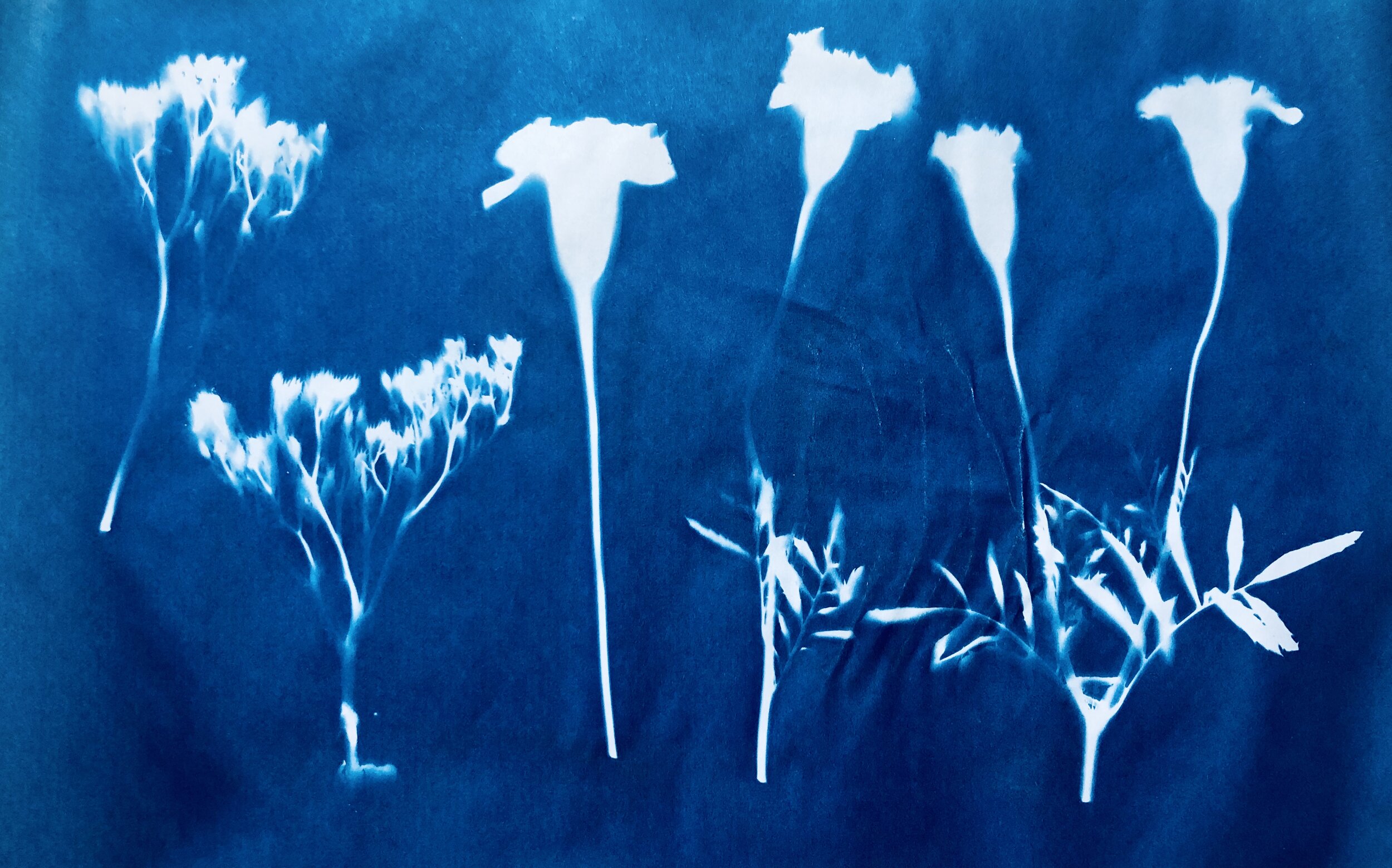How To DIY Cyanotypes
A Lesson on Cameraless Photography
Have you ever seen a blue photograph? If you lived in the 1800s you would have! Early photographers created blue images, called cyanotypes or sun prints. This type of photographic print is made by placing objects directly onto light sensitive paper and then exposing the paper to light. This simple process was one of the earliest photographic processes, relying on just the basic principles of photography without using a camera- in fact, this process eventually led to the invention of the camera!
Using sunshine and some photosensitive chemicals you can produce your very own gorgeous blueprints right at home!
Click here: History of Photography Lesson Video
This is what you’ll need:
· sun printing paint like: Jacquard Cyanotype Sensitizer Set, Solarfast, Dye-na-Flow, or a Sunprint Kit
· thick watercolor paper, or pieces of natural fabric (cotton, silk)
· painters tape (optional)
· pins or a piece of glass big enough to cover your paper sheets
· a sunny day (12-3 ‘o clock in the afternoon is perfect)
Next, take a nature walk, and collect some natural materials, like leaves, that can lay flat against the paper as your prints are developing. I have found that flattening flowers and leaves, in a thick book beforehand, helps preserve them throughout the printing process. This helps your flowers and leaves to better keep their original shape, so the sunlight wont shrivel your items found in nature.
*If you are using a SunPrint Kit, the paper provided is already prepped and ready to go! Simply, follow the instructions that came with your kit.
Making Cyanotype Prints
How-to prep the paper. Mix the solution according to the package instructions. Paint it onto paper and let it dry in a dark place, without sunlight. A closet without windows works great, or paint the paper in the evening the night before, when the sun goes down.
Working in dim lighting, pin the treated paper to foam board or similar portable surface. I used a large sheet of foam core board.
Now, cover the surface with flat items found in nature, or objects from around the house to form a design. Possibilities include leaves and flowers, foam shapes, stencils, stick-on letters, or printed transparency sheets.
Flat objects like plants that have been pressed in a thick book, work really well for creating a more defined printed image.
4. Place the board in sunlight. Tilt the board if necessary to match the angle of the sun. A ten-minute exposure is standard–decrease the time slightly for bright mid-day summer sun, or increase it for less than optimal conditions. The paper prints will turn grayish as it exposes.
5. Bring the boards back inside and remove the masks and pins. Wearing rubber gloves, rinse the paper in several changes of warm water, adding hydrogen peroxide in the last rinse (suggested as an optional step, but I recommend it). Watch the magic happen as the print develops!
6. Hang prints, and allow to drip dry in a dry space. A clothesline outside works great!
Fun Facts:
The Cyanotype process was developed in 1842 by Sir John Herschel.
The Cyanotype reaction priduces the cyan-blue pigment ferric ferricyanide (also known as Prussian blue), a pigment found in many high-end watercolors, oil and acrylic paints.






